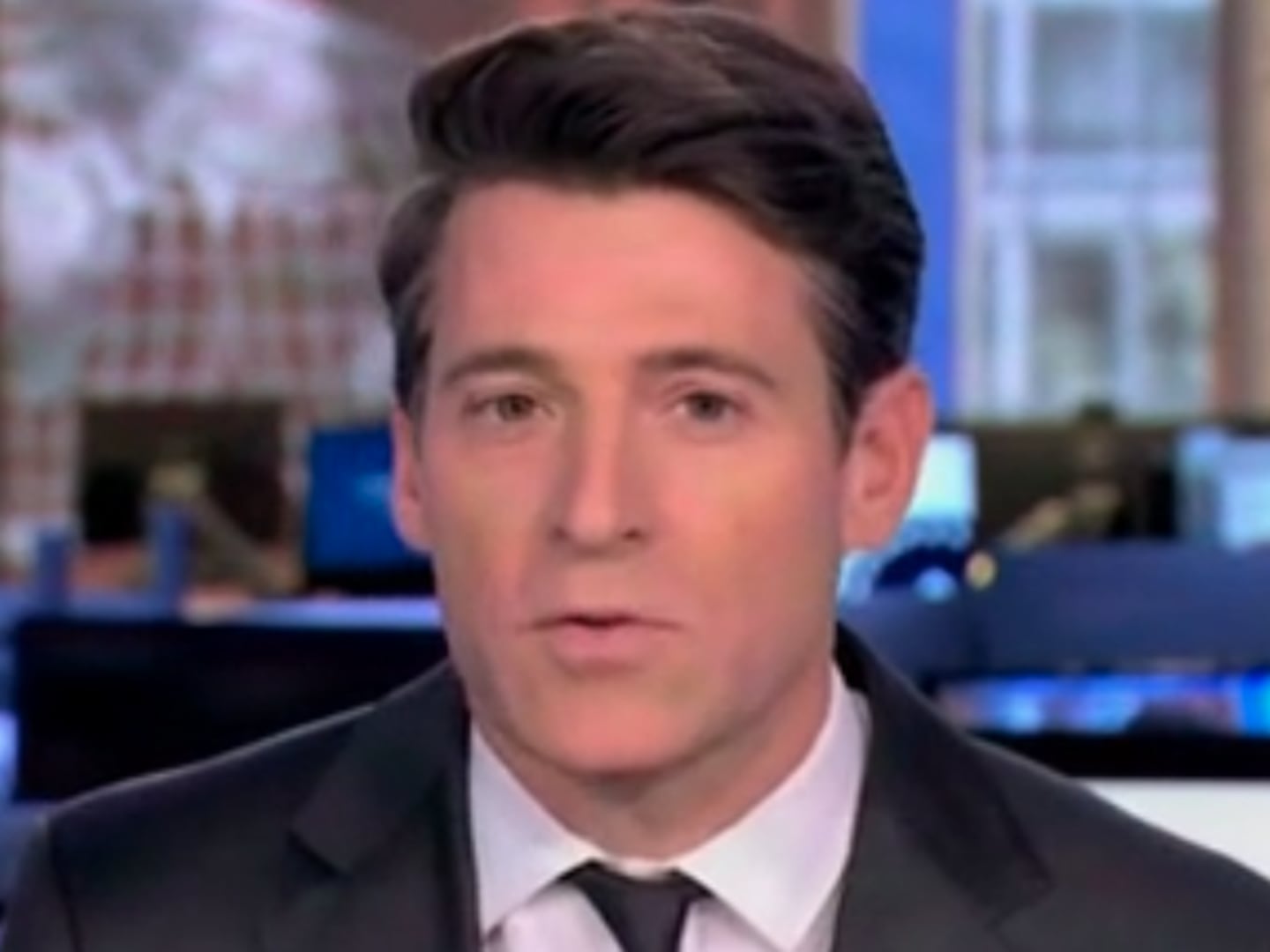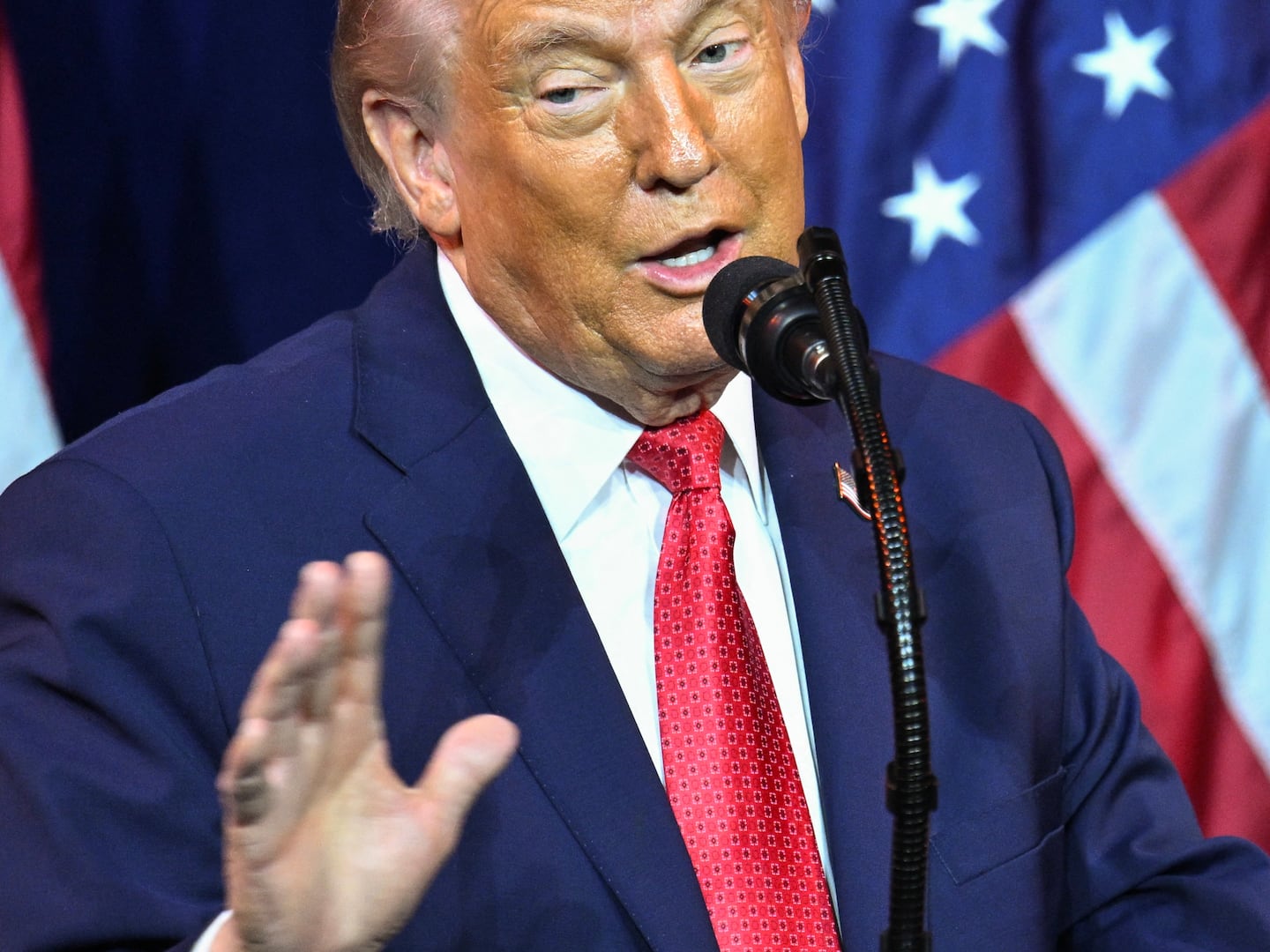The one time Darrell Hammond smoked crack, he got recognized at the crack house.
The guy who was, I guess one could say “running the place,” started yelling at the person who brought the longtime Saturday Night Live star there. “You’re wrong to bring that muthafucka in here!” he shouted. “That muthafucka is the po-lice!” But then from across the room, between puffs of a crack pipe, a topless woman stood up and corrected him: “That’s Clinton!”
“I was like, really?” Hammond remembers. “A breath away from hell.”
The 63-year-old comedian laughs while he tells this one, being recognized for his Bill Clinton impression at the lowest of lows. He cries when he tells others. There are some stories that he’s still working out his feelings about, and others that he’s relieved to finally have clarity over. No, when it comes to his late, abusive mother, who once hit him in the stomach with a hammer and cut his tongue with a serrated knife, it’s not the clarity he’s relieved to have. Finally, in her death, it’s the power.
“She died with a big-ass smile on her face,” he says. “Like Tony Soprano’s mother.”
We’re meeting at his regular diner on the Upper West Side, just north of Lincoln Center, discussing a new documentary about his life, Cracked Up, which premieres Wednesday at the DOC NYC festival in New York City.
He’s told these stories before, first in a jaw-dropping 2011 memoir, God, If You’re Not There, I’m F*cked: Tales of Stand-Up, ‘Saturday Night Live,’ and Other Mind-Altering Mayhem; then in the 2014 solo stage show The Darrell Hammond Project; and now in director Michelle Esrick’s documentary. Cracked Up charts how the performer’s unresolved childhood trauma led to decades of crippling mental injury—and, finally, recovery.
To those conditioned to laugh at Hammond’s record-setting 107 impersonations during his, again, record-setting 14-year tenure on Saturday Night Live—Regis Philbin, Chris Matthews, Dr. Phil, Al Gore, Donald Trump (yep), and Sean Connery in Celebrity Jeopardy—the revelation that he suffered decades of cutting, drug abuse, and turmoil in the hallowed halls of Studio 8H might be jarring. One could perhaps liken it to the surprise of spotting the world’s most famous Bill Clinton impressionist at a crack house.
Imagine if this happened today, in the age of TMZ and camera phones and the relentless tabloid cycle: It’s the night the much-anticipated 2000 presidential debate episode of Saturday Night Live is going to air, and the performer playing Al Gore, triggered by a PTSD episode flashing back to his childhood abuse, has cut himself so badly that he was taken out of the studio in a straitjacket.
It was an isolated incident, but not the only incident.
The cutting started when he was 19. His memoir title comes from the half-hearted prayer he offered from a Mexican jail cell after crossing the border and consuming too many substances that will “kill you for less than a dollar.” He was invited to, but missed, Clinton’s second inauguration after getting too drunk off Grand Marnier at his hotel, waking up incoherent at the airport and relying on a stranger to buy his ticket. In 2010, the year after he left SNL, he drank a “vat” of absinthe and thought it would be a good idea to “saw my arm off with a kitchen knife.”
He spent time in and out of psych wards over the years—reliably getting at least one “do Bill Clinton!” from a fellow patient at each one—and faced a dizzying array of diagnoses and a buffet of prescriptions, spending most of his time on SNL medicated.
The “hallelujah chorus moment” of his life, however, was meeting a doctor who explained that he wasn’t suffering from mental illness, but from mental injury.
He estimates it was about nine years ago when he was told that his behavior was likely a product of an event or series of events, that it was possible to identify what they are, and then treat them. In this case, it was his mother’s abuse. “It’s sort of like my soul always knew there was a bad guy in our house, but my mind didn’t want to accept it because the bad guy was a parent,” he says.
He tears up just recalling the sense of peace. It’s why he agreed to be filmed over the last four years by Esrick for the Cracked Up documentary. Esrick and Hammond had been friends for some time when, while writing his one-man show, he told her about his doctor delineating mental illness from mental injury.
“That completely blew my mind and blew my heart open, actually,” Esrick tells me. “I could actually feel this wave of compassion flow through my body and out to the universe. I felt if people knew this was a biological issue it would lift the shame and the stigma. The film is really about the long-term effects of childhood trauma.”

Vanessa Bayer, Darrell Hammond as Bill Clinton, and Kate McKinnon as Hillary Clinton during the ‘Hillary Clinton Election Video Cold Open’ skit on April 11, 2015.
Dana Edelson/NBC/NBCU Photo Bank via GettyOf course, given the state of the world, trauma is a word at the top of many people’s minds for many reasons these days. We overhear the women at the table next to us debating Melania Trump’s complicity. There are the dueling TVs over the diner’s breakfast bar, one covering Donald Trump’s ban of a CNN reporter from the White House press room and the other continuing to fear-monger over the immigration caravan. Even after the interview is over, Hammond and I analyze Trump’s rhetoric and popularity until we part ways on the sidewalk.
“What do you think about it?” he asks me, genuinely wanting to make sense of the news, not to mention the man he once played and acted in scenes with as a cast member on SNL. “I made a statement a couple years ago when I first met him that I’m pretty sure he’s a genius and I’m not really sure at what. I don’t even mean it as a joke,” he says. And then again, “What do you think?”
Hammond came to comedy late, at least a lot later than the Adam Sandlers, David Spades, and Chris Farleys who were lighting up Saturday Night Live in their early twenties when Hammond joined the show. Hammond wasn’t cast on SNL until he was 39. He was 27 when he first started really practicing voices and impersonations. Most comedians craft their acts in the nuthouse, right?
There’s this lingering cliché that behind every skilled comedian is a dark past. If behind every cliché is a kernel of truth, then Hammond is the jumbo popcorn bucket. Comedy did come out of his troubled upbringing, he says. It’s easy to see that now.
He had good years with his father, growing up in Melbourne, California. But even before he could name it, he knew his relationship with his mother was bad. The only good experiences he could remember having with her is when he would talk like other people. They would listen to A Christmas Carol every year on her phonograph, and he would imitate Ralph Richardson and Paul Scofield’s voices, the only thing that would make her laugh. That led to more impressions: Popeye, Porky Pig, Bugs Bunny.

Kristen Wiig as Kathie Lee Gifford, Tom Hanks, Darrell Hammond as Sean Connery, and Norm McDonald as Burt Reynolds during the ‘Jeopardy!’ skit on May 16, 2009.
Dana Edelson/NBC/NBCU Photo Bank via Getty“Of course, at school you definitely get invited to the sock hop and the skating rink if you can talk like Looney Tunes characters,” he says. “It was also a good way to hide and go, hey, if you knew what’s really going on, you wouldn’t invite me anywhere.”
What was really going on was his mom slamming his hand in car doors. Her taking the cover off an electrical socket, holding his hand to it, and then pulling hers away right before it zapped him. The hammer to the stomach. The knife to the tongue.
Over the years as he developed voices and characters, he would see them in colors. Popeye was blue. Porky Pig was yellow. Later, Sean Connery would be a purplish pink. Richard Dreyfuss was a bluish green. No characters, however, were red. He learned why the first time he had a blinding vision, a ball of red light that sparked a terror in him that could only be mitigated by cutting his wrist. He was 19 and, as would be explained to him later, experiencing his first PTSD episode related to his childhood trauma.
When he was 27, a psychiatrist—“I think it was number 11”—said he was manic depressive and a schizophrenic and committed him. He spent that year practicing voices at night. A year and a half later, he was hired by a radio station. He moved to New York and started doing stand-up comedy. He honed his act at the motel where he worked, regaling the regulars with this bit where Popeye has sex with Olive Oyl. Later he would learn that the men he made laugh would be fingered by the FBI as “the most savage gang in the history of New York.”
He was 39 and on lithium when he auditioned for SNL. His Clinton impression got him the gig.
Lorne Michaels knew about Hammond’s issues, including the cutting. I mention to Hammond that it’s both surprising and impressive that the show stood by him through everything that happened.
“The thing about it is, I wasn’t like that every day. And even when it was like that, it wasn’t all day,” he says. “So I wasn’t that big of a pain in the ass. The thing for them watching was do we help this guy by letting him work, or do we ship him off somewhere?”
The straitjacket episode was certainly traumatic but, professionally speaking, it was isolated.
“I never showed up impaired on game day. I never drank on game day. I always showed up pretty solid.” He cracks a sly grin. “There was one morning I drank at 8 am. But that was just once.”
These days, Hammond’s SNL workload as the announcer is significantly lighter than when he was the show’s anchor star for more than a decade.
He was there last weekend when Pete Davidson apologized to Lt. Com. Dan Crenshaw for an insensitive joke he made about the war veteran losing his eye while serving. Hammond had famously harbored conflicted feelings about portraying Sen. John McCain when he was on the show, given McCain’s war hero status. I ask him how he felt the whole Davidson controversy was handled. “Pete’s a beautiful guy and Lorne’s a smart guy,” he says. “That was a natural home run.”
Understandably, Hammond has empathy for what current cast members go through. He remembers being asked to serve as a political pundit just because he was portraying politicians on the show. One time in a chummy interview, Chris Matthews, whom Hammond also impersonated, pivoted to the whiplash-inducing, “What do you think of the Iraq war?”
“I always studied how a person walks and talks,” Hammond says. “How do they move? How do they speak? Not what do they say when they’re doing it.”
That doesn’t mean that he’s uncomfortable speaking about politics. Or rather, just trying to understand.
He’s perplexed by Trump, or maybe more accurately, by the tendency to categorically dismiss him. “He reminded me when I spent time with him of one of the velociraptors, studying that chain-link fence looking for the weak link,” he says. “The notion that this guy is unintelligent enables him to pass everybody.”
He tells me a story about their time together on set that he says “some people don’t like me to tell.” It was a Friday, and they were rehearsing a Regis Philbin and Kelly Ripa sketch with Amy Poehler. “I was a little stunned by how he hard he worked,” Hammond says. He told Trump as much.
As Hammond remembers, Trump said, “Well look, I can’t act. I know I can’t act. I feel like somewhere here in this building, there’s some person—I don’t know who it’s going to be—who’s going to tell me how to get a good show when I can’t act.”
He says Trump confessed that he was going to try to go off-book, because he knows he sounds stilted when he tries to read lines, and comedy is funnier when it seems real. Hammond was impressed. “I was like, it took me 20 years to learn that!”
Because of his stand-up schedule, Hammond has experienced his own sociological survey of the nation’s differing attitudes toward the president. He was performing in Jacksonville a year and a half ago when a man “right out of central casting for the Deep South” interrupted him when he brought up Trump’s name on stage. “Nuh-uh!” the guy shouted. “I wouldn’t if I were you.” It chilled him. An actual threat.
“I came up with a line like ‘I think I’m going to switch topics because I think an ass-beating takes away from the comedy,’” he says. “That is prevalent in different parts of the country where people are attached to this guy with religious fervor, missionary zeal. Conversely, one night on stage at The Improv on Melrose in Los Angeles, 35 people started screaming, ‘Fuck Trump.’”
He’s confused. A little exasperated. “What’s coming?” he asks me, desperate to know about the news cycle, about our country, about the world. He really wants to know. Hopes for an answer. I don’t have one. Who does?
It’s not as if he wasn’t engaged in these kinds of questions before. But existentialism becomes more nuanced once a person is able to confront his demons, address their trauma, and start to have some clarity about life. Still, that life is in progress.
He says he watched the documentary once, and probably won’t watch it again. “It’s sort of confirming this deep, dark inkling of mine that it was really fucking bad for a good while, and there were a couple of real bad people,” he says. “To see it depicted so cleverly on film was jarring.”
He’s had an epiphany, one that he hopes will help others, too. “Just because you’ve figured out where the injury came from doesn’t mean you don’t still have the injury,” he says. Healing the injury is still daily, hard work.
“The good news is after all this work is that I don’t really have terrible days anymore,” he says. “I have bad days like everyone. But not those awful things. I don’t wake up screaming. I don’t cut. That’s progress.”






